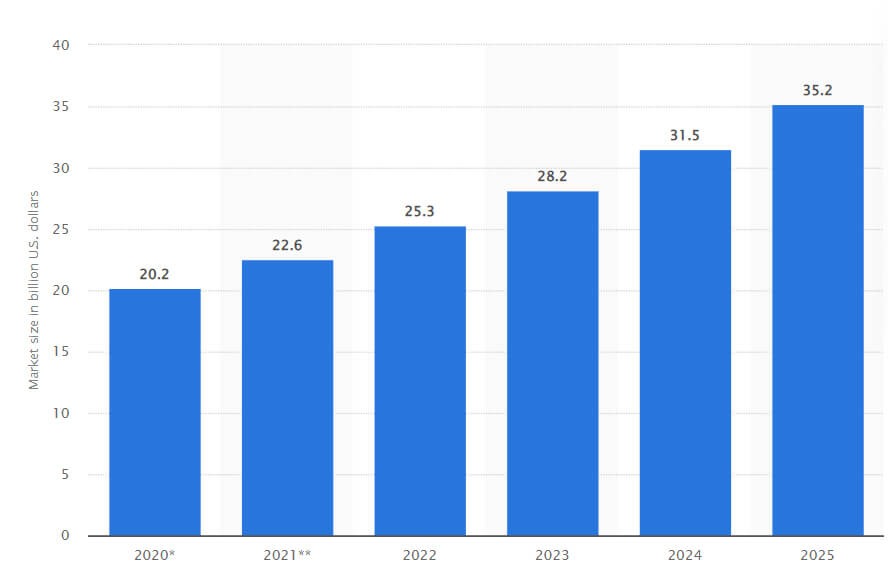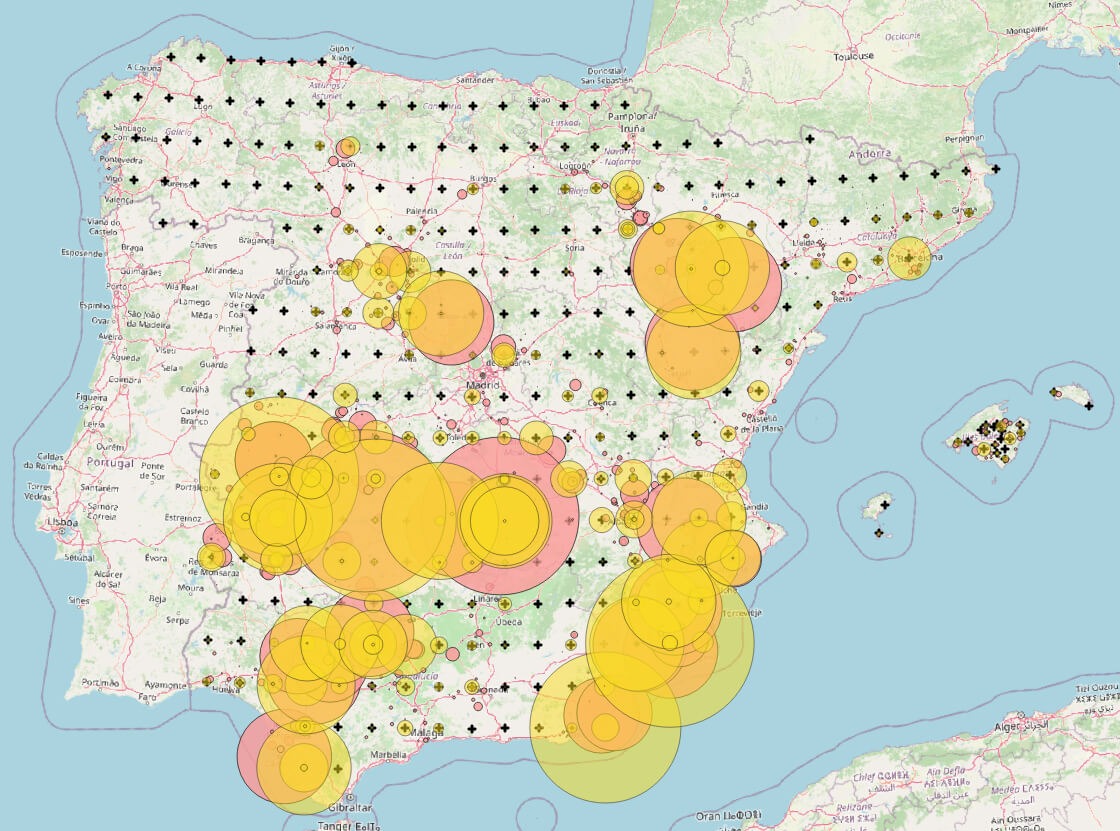Learn more about Steadysun API for renewable energy forecasting
null
Innovation
01/03/2023
by
Valéry Tarondeau
10 min
What is an API?
API = Application Programming Interface
It is an interface that allows applications to communicate between themselves. There are different types of APIs:
- Operating system APIs allows software to interact with devices or IoT, to recognise gestures (touch screen, etc).
- Programming language APIs allow developers to use predefined functions, so they don't have to reinvent the wheel.
- Infrastructures APIs allow developers to change the available resources to run an application via the cloud (virtual machines, servers, network architecture, etc.) : Amazon Web Services, Google Cloud Platform, Microsoft Azure, etc.
- Web APIs allow querying services provided by web platforms. From Google Maps backgrounds to Facebook's Social Graph and passing through tweet monitoring, this is the fastest growing category of API. For example, Airbnb uses the Google Maps API to turn the addresses of rental properties into geotags.
null
null
null
null
null
The REST API
Today, introducing photos with two clicks, tweeting, or saving five terabytes in the cloud are simple operations that no one is surprised by anymore. This ease is made possible by REST APIs.
But what exactly are they? How and why were they created?
Before the year 2000, there were no standards on how to conceive an API or how to use it. Its integration required the use of protocols such as SOAP, which was complicated to implement, unwieldy and difficult to debug. But this will change in 2000, when the real potential of Web APIs was recognized: a group of experts, led by Roy Fielding, invented REST and changed the API landscape forever.
The stated objective is to simply create a standard, allowing the communication and the exchange of data between two servers, anywhere in the world. They therefore designed a set of principles of property and restrictions called REST, a resource-oriented architecture:
- Uniformity of the interface
- Customer/server architecture
- Stateless session maintenance
- The caching of the resource representation
- The use of the HTTP protocol and its methods.
The rules are many and universal. Through the correct application of these rules, the API is forced to simplify, and significantly facilitates the integration work.
null
null
null
Learn more about Steadysun API for renewable energy forecasting
null
null
null
API in the energy sector
The energy sector needs to adapt to the new requirements from customers and stakeholders.
- "94% of energy suppliers report that reacting quickly to operations is a challenge."
- "36% of consumers are ready to pay more for sustainable energy."
- "Energy consumers opt for digital interaction in 8 out of 10 interactions."
"Companies should opt for an agile IT development to answer these challenges effectively. The API can be used for this purpose and increase the pace of digital transformation in the energy sector."
Source EY
null
null
null
null
Technological integration
The API allows the transmission of collected data. This data can be integrated into a company's application or can be analyzed to generate an overview.
The API can use the data generated by IoT, which is increasingly present in this sector. The value of IoT in the energy sector is expected to grow over 35 billion dollars by 2025.
null
Number of connected objects in the energy sector
Source: Statista

Number of connected objects in the energy sector
Source: Statista
null
null
The following are some examples of APIs in the energy sector:
- SMAPPEE:
This API allows the collection and monitoring of solar, gas and water energies used with the API. In addition, events and cost analyses of devices can be collected using their API.
- GENABILITY:
This API gives information on electricity prices, such as taxes and seasonal rates.
- SCHNEIDER:
The Schneider Facility Experts Data API supervises and tracks equipment and building data. The API can supervise and set alerts for events such as overheating of cables, loss of voltage, and equipment failure.
null
null
null
Steadysun API
null
The Steadysun API provides a simple and standardized way to incorporate your forecast data into your information system. The API respects REST semantics, uses JSON to encode objects and is based on the HTTPS standard.
The functional perimeter of the API is sufficiently large to allow the user to manage routine operations in complete autonomy:
- Site configuration (solar and wind power plants)
- Power plant aggregations
- Forecast data retrieval
- Send actual production data
null
null
Plant management
The Steadysun API can provide forecasts per power plant or for a group of power plants for which forecasts will be aggregated.
With the API, it is possible to manage the power plant portfolio:
- List and characteristics of power plants (name, location, type, installed capacity, etc)
- Creation of a new power plant
- Modification of an existing power plant (maintenance)
- Activate or deactivate a power plant unit
- Deleting a power plant unit
Learn more
null
null
Management of plant groups
Plant groups are used to generate aggregate forecasts. Groups can be hierarchical. A "parent" group can contain many "child" groups. In this way, you can set up several aggregation levels and retrieve forecasts for each of these levels.
- List and characteristics of plant groups
- Creating a plant group
- Creating a subgroup and attaching it to the parent group
- Deleting a group of plants
- Attach (or detach) a plant to a group
Learn more
null
null
Forecast retrieval
The Steadysun API allows you to retrieve the latest available forecast at any time. Indeed, the forecast data are updated as soon as a new data source is available (satellite image every 5-15 minutes, weather models output every 3 to 6 hours depending on the region, actual production data every minute/day depending on users). Forecasts are organized by variables.
Learn more
Here is a summary table of the most commonly used variables for solar energy forecasting:
null
null
Sending production measurements
The API in turn allows us to send the production measurements available from the user information system. These measurements can be sent in real time (every 15 minutes for example) but it is also possible to send each day the production of the day before.
- Sending measurements for a plant
- Sending measurements for a group of plants
null
null
Forecasts by territory
When the forecast is applied to a territory (for example the whole country), the number of power plants is very significant and the characteristics of each one is often not known precisely. In the majority of these cases, Steadysun proposes to grid the area with a regular matrix of virtual power plants representing the power installed in a 10 to 50 km radius. In this case, the API is not used by the customer to manage his portfolio.
The customer regularly provides his portfolio in the way he wants (csv, Excel, ...) and Steadysun designs a tailored solution.

Example of configuration for Spain
null
null
null
null
null
null
null
null
null
null
null
null
